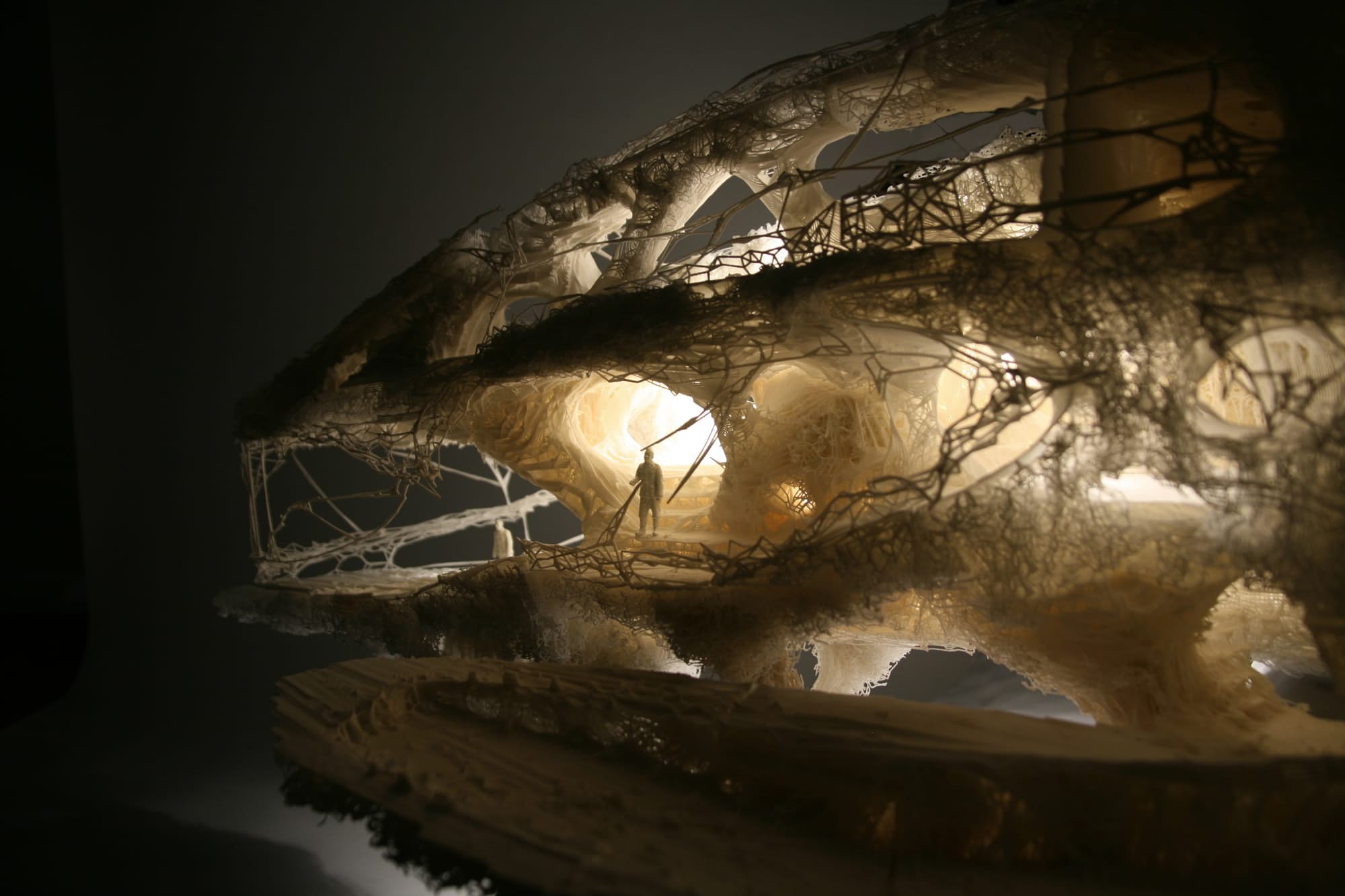
For this week, I looked at Yugyeoung Lee’s post from week 2. The project that Lee discussed is an experimental architectural prototype from the designer firm Softkill. Using bone structures as a basis for infrastructure, computer algorithms build a sound structure, that is then printed in material and cost effective plastics. A advanced algorithm coupled with a sophisticated laser technology makes this project possible.
I agree with Lee in saying that this kind of conceptual experimentation reveals much about how architecture can move towards a more cost and material efficient future. The additional features of no adhesives and lightweight fibers further shows promising signs for this technique and technology. I think this project certainly serves itself well as a concept project, but I do think there are several considerations that were not addressed in the article. While it was uplifting to see that these fibers were bioplastics, it certainly does not mean this architecture is completely sustainable. Although some of the bases for the fibers would be from renewable materials, the amount of energy needed to transform that material into structurally sound plastic might outweigh its own benefit. This is my guess as to why more projects using this bioplastic material technology have not come about in the three years since Softkill’s project; the process to use this seemingly green material consumes too much money and energy to be sustainable.
![[OLD – FALL 2016] 15-104 • COMPUTING for CREATIVE PRACTICE](wp-content/uploads/2020/08/stop-banner.png)